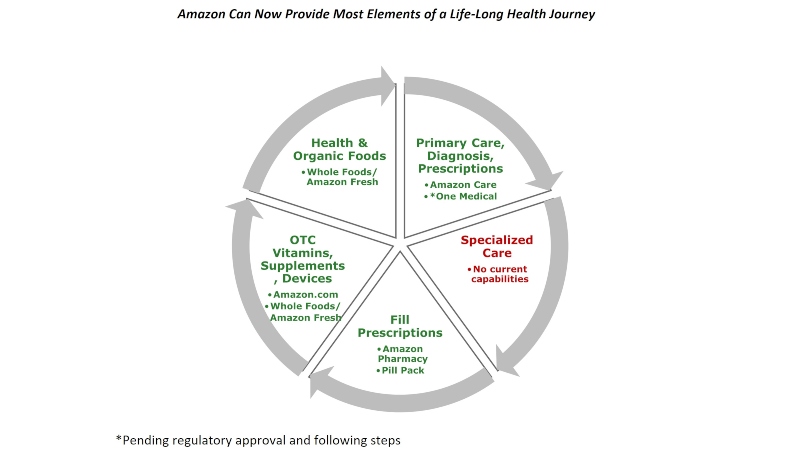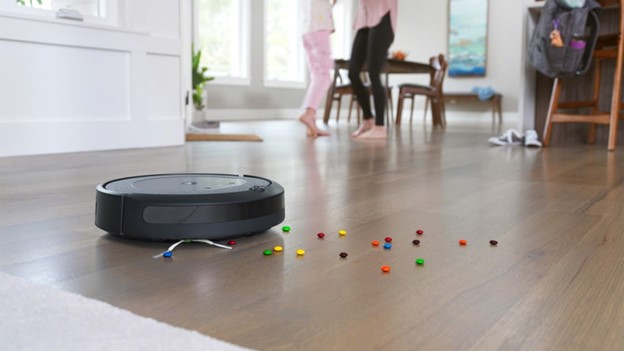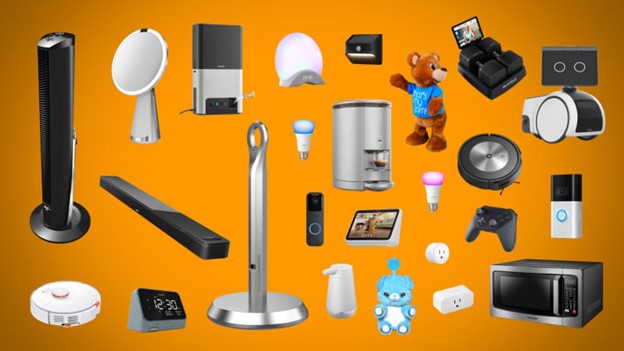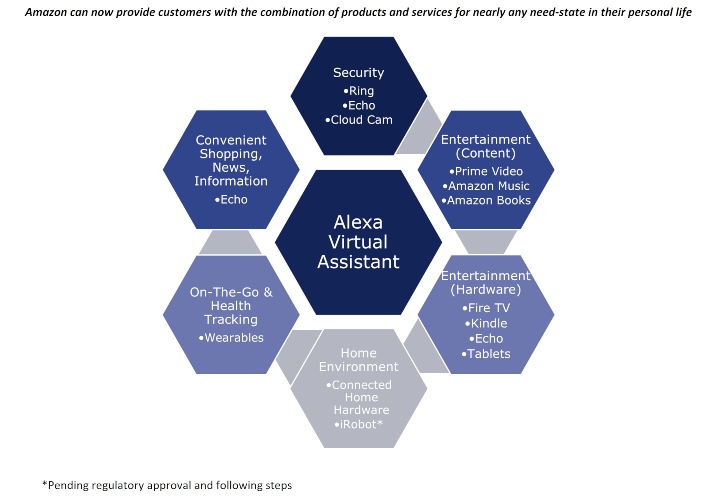Amazon in Acquisition Mode: Breaking Down a Successful Expansion Recipe
This week, Amazon made headlines with their inaugural Prime Early Access sale, which gave members early access to holiday deals on popular products. While this additional sales event has been criticized by some for its lack of social media buzz amidst 2 quarters of declining Ecommerce revenue, Prime Early Access also reflects Amazon’s most powerful growth strategy: to win the majority of each customer’s spend, category by category, until the customer does most of their spending for any occasion through an Amazon entity.
In this case, Amazon is making a concerted effort to capture all of each Prime member’s holiday spend by starting early in the calendar, promoting heavily, and even publishing an old-school printed toy catalog. However, this share-of-wallet strategy extends far beyond seasonal events.
We have previously discussed Amazon’s disruptive innovations, as well as some of their flops. Two recent acquisitions (OneMedical for $3.9B this July and iRobot for $1.7B this August) show they are not done disrupting industries, with the goal of creating closed spending ecosystems to lock customers in and lock competitors out.
In the Health & Wellness Space:

Image via MSN
Customer Journey Amazon wants to own: Any person’s health and wellness prevention, treatment, and maintenance journey over the years.
Expansion steps:
- Sell OTC medicine, vitamins, supplements, and other non-controlled wellness products on amazon.com
- 2017 acquisition of Whole Foods, whose offering is geared toward organic and health foods
- 2018 acquisition of Pill Pack, a home-delivery provider for prescription medications with licenses in many US states and with important relationships with insurers and suppliers
- 2020 launch of the Amazon Pharmacy store, which provides Prime members with the ability to fill prescriptions online, delivered within 2 days, and provides them with access to non-insurance cost savings
- 2021 pilot of medical and telemedicine services through the Amazon Care program
- 2022 acquisition of One Medical, a membership-based, digitally enabled primary care provider with nearly 190 clinics and a large customer base

Image via Amazon.com
Current capabilities:

In the Smart Home Space:

Image via Consumer $ense
Customer Journey Amazon wants to own: Simplifying & improving any person’s daily life through technology.
Expansion steps:
- Customer Journey Amazon wants to own: Simplifying & improving any person’s daily life through technology.Expansion steps:
- Develop & constantly improve the state-of-the-art Alexa AI virtual assistant software
- Provide this advanced software to customers for free (Alexa mobile app) or at a very good value (Echo home speakers)
- Create, grow, and improve the ecosystem of smart home and connected devices that are dependent on Amazon Alexa as their hub, including:
- Own-brand devices: Echo, Fire TV, Kindle, etc.
- Partnerships: VIZIO, Fitbit, certain mobile phones
- Acquisitions: Ring home security, iRobot home environment
- Third-Party: smart-home hardware like wi-fi lightbulbs, dependent on Amazon Web Services (AWS) standards and connectivity to be Alexa-compatible
- Develop a competitive offering of entertainment content through Amazon Books, Music, and Prime Video

Image via CNBC
Current capabilities:

Closing the Ecosystem
Of course, as a savvy operator Amazon does not just stop at offering a one-stop-shop for customer need-states. They also make an active effort to keep customers locked into the ecosystems by creating incentives to keep buying from Amazon properties, and disincentives against leaving.
In the Health & Wellness and Smart Home examples, Amazon can create seamless connections across devices or services, making it easy and simple to stay in the ecosystem, like a shared profile and payment method across primary care, pharmacy, and Amazon Prime, or smart home devices that are Alexa-compatible “out of the box”.
They can also take steps to box out competitors, like creating discounted bundles of products/services or creating incompatibilities with outside providers or unaffiliated devices. However, planned incompatibilities can push frustrated customers away from the brand and should be employed with caution.
How Can Other Retailers Apply this Growth Strategy?
Underpinning every growth decision Amazon makes is a deep understanding of their customers and a strict adherence to their brand’s strategic positioning. They understand their customers intimately by leveraging the tremendous amounts of attributable shopping and browsing data generated from their sites and stores. They also stay true to their strategic positioning of creating seamless “one-stop-shops” for customers anywhere they interact with the Amazon brand.
Retailers hoping to emulate this growth strategy must know their customer and know themselves. The combination of deep customer understanding and a strong brand positioning can then guide their growth decisions to maximize their share-of-wallet at each moment while also building a powerful brand to retain customers for life.
No two growth strategies are the same. However, all strong strategies start with a great plan. At McMillanDoolittle, we help retailers and brands identify where to play and how to win. Contact Us if you would like to talk more about your growth opportunities.
No Comments